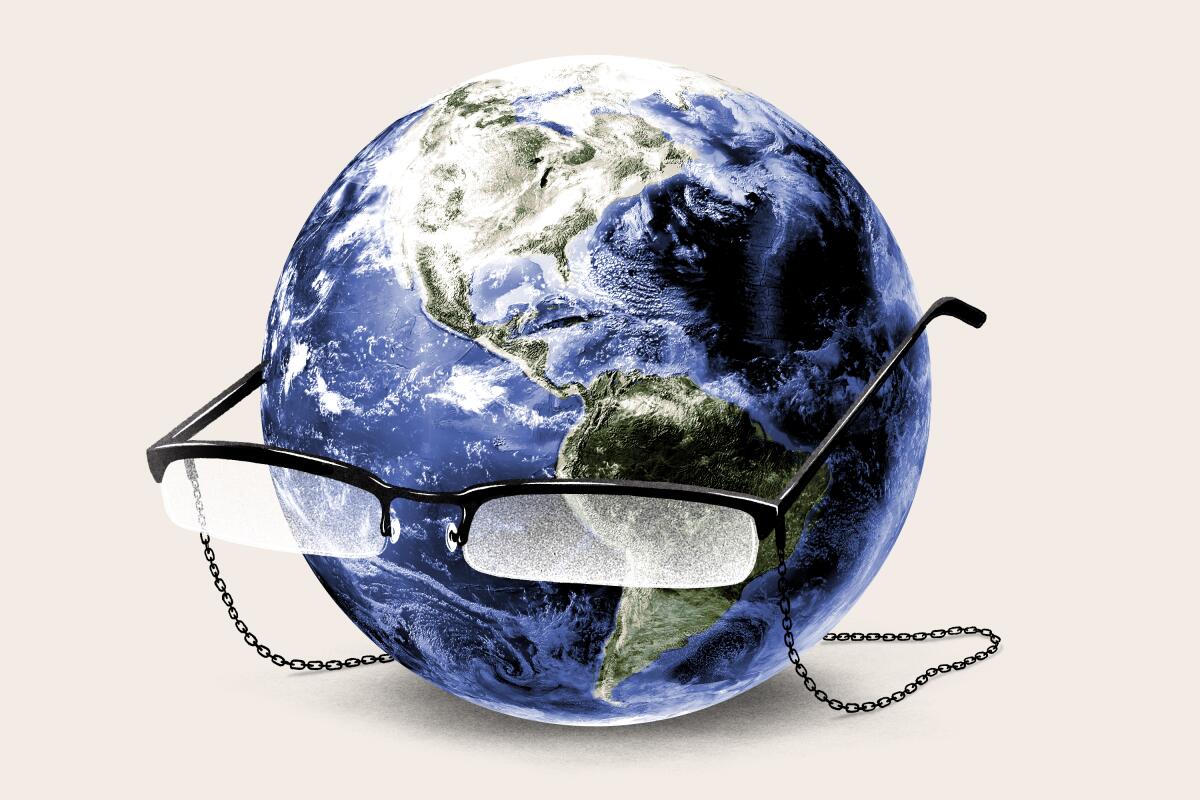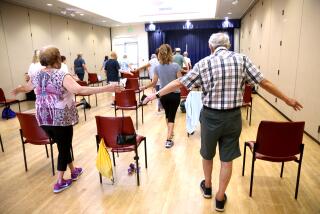Why we need a global institution for an aging world

- Share via
The COVID-19 pandemic has made global aging impossible to ignore. This pandemic is the first to occur since the world’s population of those older than 65 exceeded the population of children under 5 — and COVID-related mortality rises sharply with age.
In the United States, for example, more than half of COVID deaths are among those aged 75 and older. Based purely on these demographic factors and mortality rates, the loss of life worldwide (4.7 million as of late September) has been greater than if the pandemic had occurred in previous eras.
The pandemic has exposed a gap in our global governance structure. There is no single international institution responsible for safeguarding the rights and advocating for the interests of the world’s fastest-growing age group — those 65 and over. The lack of a unified global response to a worldwide pandemic has disproportionately affected this population. Inconsistent vaccine rollouts are the most obvious symptom, but many other dimensions of vulnerability exist. For instance, in low-income countries, 46% of those aged 65 and over are in the labor force, and they are rarely a policy priority.
Other population groups have not been neglected. The United Nations Children’s Fund, for example, targets the needs and rights of children and has made a difference. Since 1990, the mortality rate for children under 5 has fallen nearly 60%. Although numerous factors are responsible, UNICEF’s advocacy, as well as vaccination and sanitation programs, contributed significantly to this dramatic improvement.
The United Nations has agencies focused on women’s empowerment, issues of sexual and reproductive health, and labor standards and conditions for workers. But an organization that addresses the rapidly growing and vulnerable older population is missing.
The reasons for this institutional gap are historical. The world’s population was very different when the United Nations and the World Health Organization were established in the 1940s. In 1950, there were around seven times more children under 15 than people aged 65 and older. But by 2050, these two age groups will be approximately the same size, with 1.5 billion people aged 65 and older — nearly double the number of children alive during the establishment of the U.N. and WHO.
Filling this gap requires two initiatives. The first is to establish a U.N. Convention on the Rights of Older People to provide a framework for tackling economic and social inequities and vulnerabilities. Next is the creation of an international agency (U.N. Program for Older People, or UNPOP). Many of the activities of UNPOP would mimic those of UNICEF. Inevitably a major focus would be on health where the need is great and the gap considerable. The very fact that the WHO considers deaths below the age of 70 as premature but not at older ages points to the scale of the challenge. UNPOP could also tackle abuse and exploitation of the vulnerable aging population, as UNICEF does for children.
Unfortunately, three common misunderstandings have sustained this institutional gap.
For starters, population aging is conventionally viewed as a problem predominantly for rich countries. While high-income countries currently have the highest proportion of people aged 60 years and over, most people in that age cohort live in low- and middle-income countries. There are 308 million people in this age group in high-income countries, compared with 322 million in low- and lower-middle-income countries and 419 million in upper-middle-income countries.
This leads to a second misunderstanding: that countries with large youth populations do not need to worry about societal aging. But they do. Global life expectancy increased from 34 to 73 years between 1913 and 2019, so the goal must be not just to meet the needs of today’s older populations, but to ensure that future aging populations are as healthy and productive as possible.
This forward-looking approach highlights the third misunderstanding — which is reflected in the failure to consider aging from a life-stage perspective. Achieving healthy aging requires focusing on all of life’s phases, from prenatal care to end-of-life care. As the young will lead the longest lives, this life-stage approach is necessary to achieve intergenerational fairness and prevent the risk of inequities compounding over a lifetime.
There is considerable diversity in aging, and this will become ever more apparent as the number of older people increases. A global organization for them should emphasize the rights and needs of the most vulnerable. At the same time, there are also wider gains to be achieved. Past improvements in health have supported economic growth, and it is reasonable to think that this could apply to the older population as well. One-sixth of the global workforce is currently aged 55 and over, and this proportion is set to rise further. Thus, a targeted agenda for older people would help countries realize macroeconomic gains.
In far too many countries, existing forms of social support are underdeveloped. This gap at a national level is further reason for a global advocacy body to spread best practices. The world largely was unprepared for the COVID-19 pandemic. It cannot afford to be unprepared for the rising trend of age-related diseases driven by these demographic shifts.
John E. Ataguba is an economics professor at the School of Public Health of the University of Cape Town. David E. Bloom is a professor of economics and demography at the Harvard School of Public Health. Andrew J. Scott is an economics professor at London Business School.
More to Read
A cure for the common opinion
Get thought-provoking perspectives with our weekly newsletter.
You may occasionally receive promotional content from the Los Angeles Times.









